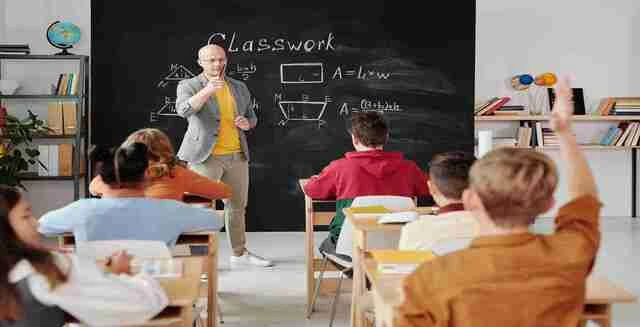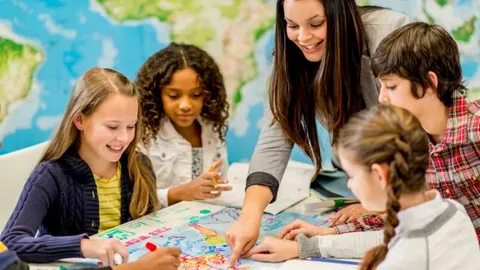
Effective communication between students and teachers is the foundation of a productive learning environment. Clear communication, whether in the classroom or in virtual settings, can make a significant difference in a student's academic journey. A well-implemented school management system can further enhance this communication by providing streamlined channels for interaction and feedback. In this blog, we will look at the importance of student communication, how it influences learning, and techniques for improving communication between students and teachers.
Why Does Effective Student Communication Matter in Education?
Student communication is essential for creating the entire learning experience. When kids can interact freely with their professors, they feel more confident, supported, and understood. This communication increases clarity, eliminates misconceptions, and boosts classroom participation. In contrast, poor communication can create barriers, making it harder for pupils to express themselves or ask questions.
Strong communication between students and teachers has an impact on their emotional well-being. When students understand that they may approach their teachers with questions or concerns, they are less likely to feel alone or confused about the material. This trust promotes a collaborative and supportive learning atmosphere in which students feel appreciated and encouraged to contribute.
The Influence of Communication on Academic Performance
One of the most significant advantages of clear student communication is increased academic performance. Students who feel comfortable asking questions or requesting clarification are more likely to understand the topic. This leads to increased comprehension and retention, leading in improved marks and a more in-depth understanding of the subject.
In addition, excellent student-teacher communication enables teachers to identify areas where students may be suffering. This early detection enables teachers to provide individualized support, ensuring that every student has the opportunity to succeed. For example, if a student is struggling with a certain idea, open communication allows the teacher to step in with extra resources, explanations, or one-on-one tutoring to resolve the issue.
The Function of Communication in Classroom Engagement

Classroom involvement is an important aspect in student engagement. Students that are actively invested in their education tend to do better and have a stronger desire to learn. Student communication promotes student involvement by making them feel heard and appreciated. When students understand that their voices matter, they are more inclined to join in discussions, offer ideas, and contribute to the learning process.
Effective student-teacher communication promotes an inclusive learning environment. It ensures that every student, regardless of learning style, gets the opportunity to interact with the information in the way that best suits them. This two-way communication can assist teachers in changing their teaching approaches to fit the various needs of their students ensuring that no one feels left behind.
Barriers to Effective Student-Teacher Communication
Despite the numerous benefits, several obstacles can impede good relationship between student-teacher collaboration. One prevalent problem is fear or intimidation. Some students may be hesitant to ask questions or interact with their teachers out of fear of being criticized or mocked by their classmates. This can lead to a big gap between what a student understands and what they are willing to share.
Another hurdle is a lack of confidence. Many pupils, particularly younger ones, may not have acquired solid communication abilities. They may struggle to express themselves or ask for assistance, resulting in frustration and disengagement.
Cultural or language barriers might also impede student communication. In a diverse classroom, students who speak various languages or have different cultural backgrounds may struggle to properly communicate their requirements.
Finally, the teacher's communication style can occasionally operate as a barrier. If a teacher dominates conversations or does not provide a friendly climate for questioning, pupils may be less likely to interact openly.
Strategies to Improve Student-Teacher Communication
Fortunately, there are numerous techniques teachers and schools may use to increase student-teacher communication. Here are some excellent strategies for creating a more communicative and engaging learning environment:
Create a safe and open environment
One of the most important strategies to promote student communication is to foster a safe and respectful classroom climate. Teachers may help by fostering open communication, recognizing student concerns, and making sure that everyone feels comfortable speaking out.
Teachers can foster an environment in which students feel valued and heard by setting ground rules that encourage respect and active listening.
Use Technology to Enhance Communication
In today's digital environment, technology can help students communicate more effectively. Messaging apps, learning management systems (LMS), and email platforms give students more methods to communicate with their lecturers. For example, a shy student who is uncomfortable speaking up in class can send a letter or email to the teacher to ensure that their questions and concerns are addressed.
Technology also facilitates more fast and flexible communication, allowing students to seek assistance outside of typical classroom hours.
Practice Active Listening
Active listening is an essential part of good communication. When students believe that their teachers are truly listening to them, they are more willing to open up and participate. Teachers can engage in active listening by giving children their entire attention, maintaining eye contact, and responding meaningfully to their concerns.
Teachers can establish rapport with students by demonstrating empathy and patience, hence improving student-teacher communication.
Provide regular feedback
Feedback is an important part of educational communication. Teachers should provide positive feedback on a regular basis to help pupils realize their own strengths and areas for improvement. This feedback not only guides students' learning but also maintains communication channels open.
Furthermore, allowing students to provide feedback on teaching techniques and materials fosters a more collaborative learning environment in which both teachers and students may work together to improve the educational experience.
Encourage Peer Communication
In addition to student-teacher communication, peer communication is essential. When students connect with one another, they can share ideas, offer encouragement, and work through problems together. Group projects, conversations, and collaborative activities are wonderful ways to encourage peer-to-peer communication, which enhances the learning experience.
The role of parents in student communication
Parents have an important role in promoting effective student communication. Parents can help their children communicate more effectively at school by staying informed and promoting open dialogue at home. When parents communicate regularly with teachers, they may help bridge any gaps that may occur and ensure that their child's academic needs are satisfied.
Involving parents in the communication process contributes to a more comprehensive support system for the kid, ensuring that they receive the necessary advice both at home and in the classroom.
Conclusion
In education, excellent communication is essential for success. Strong student-teacher communication leads to improved academic performance, enhanced classroom engagement, and stronger connections between students and instructors. While hurdles may exist, employing communication improvement tactics can transform the learning environment and make students feel heard, encouraged, and empowered to succeed. Want to learn more about how to improve classroom management? Check out our blog for expert tips 6 Tips for Classroom Management (That Actually Work)